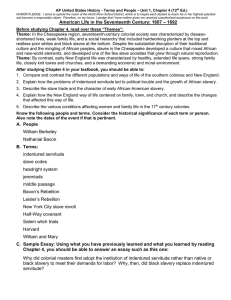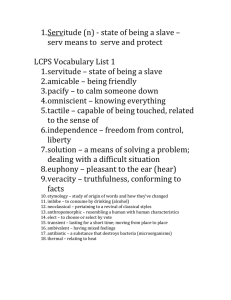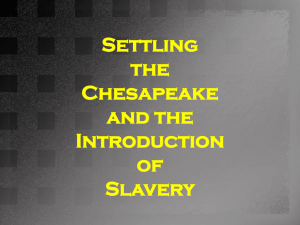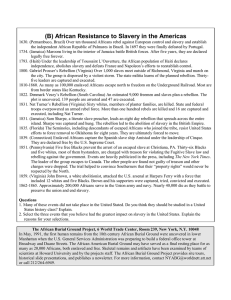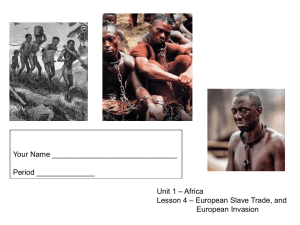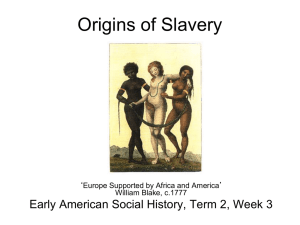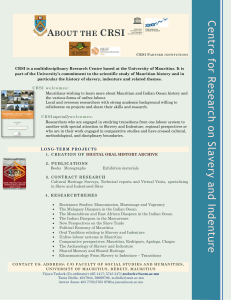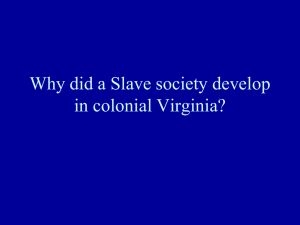Religious Faith or Skin Color?
advertisement
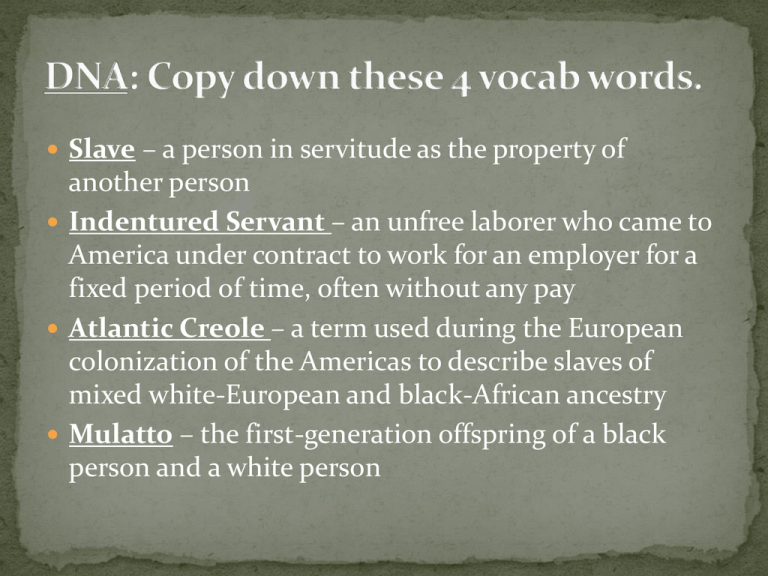
Slave – a person in servitude as the property of another person Indentured Servant – an unfree laborer who came to America under contract to work for an employer for a fixed period of time, often without any pay Atlantic Creole – a term used during the European colonization of the Americas to describe slaves of mixed white-European and black-African ancestry Mulatto – the first-generation offspring of a black person and a white person Anthony Johnson – the first slave owner in America, and he was black Emmanuel Driggus – was an Atlantic Creole in the mid-17th century who, after 12 years of servitude, was granted his freedom John Punch – a black man, and 1 of the 3 escaped indentured servants, who was caught and sentenced to “serve his master for the rest of his life.” Frances Driggus – a Virginia slave, and Emmanuel’s daughter, who fought for slave’s rights to sue in court, earn wages, and marry. Part 1: (play 2:06-10:00) Part 2: (play 0:00-3:00) Part 3: Part 4: Part 5: Part 6: “Slavery and the Making of America ... the most powerful and important television work on the subject since 'Roots'...” -- 4 STARS ****, DAILY NEWS SLAVERY AND THE MAKING OF AMERICA tells the broad story of American slavery in large part through the lives of individual enslaved men, women and children. In 1619, 20 Africans were delivered to the English colony of Virginia. A few years later 11 more Africans were brought by the Dutch who ran the colony of New Amsterdam. Thus began one of the most tragic and misunderstood chapters in American history. Through the lives of Anthony Johnson, John Punch, Emmanuel Driggus, Frances Driggus, and several others, this hour tells the complicated story of the establishment of slavery in America, the transition from indentured servitude and "half freedom" to African and African-American enslavement for life. Traditionally, Englishmen believed they had a right to enslave a non-Christian or a captive taken in a just war. Africans and Indians might fit one or both of these definitions. What if they learned English and converted to Christianity? Should they then be released from bondage and given "freedom dues?“ What if, on the other hand, status were determined not by (changeable ) religious faith but by (unchangeable) skin color? Could these captives then be forever shackled in the chains of slavery? In 1705, Virginia declared that "All servants imported and brought in this County... who were not Christians in their Native Country... shall be slaves. A Negro, mulatto and Indian slave ... shall be held to be real estate."
